Vijitha Herath
BandRC: Band Shifted Raised Cosine Activated Implicit Neural Representations
May 16, 2025Abstract:In recent years, implicit neural representations(INRs) have gained popularity in the computer vision community. This is mainly due to the strong performance of INRs in many computer vision tasks. These networks can extract a continuous signal representation given a discrete signal representation. In previous studies, it has been repeatedly shown that INR performance has a strong correlation with the activation functions used in its multilayer perceptrons. Although numerous activation functions have been proposed that are competitive with one another, they share some common set of challenges such as spectral bias(Lack of sensitivity to high-frequency content in signals), limited robustness to signal noise and difficulties in simultaneous capturing both local and global features. and furthermore, the requirement for manual parameter tuning. To address these issues, we introduce a novel activation function, Band Shifted Raised Cosine Activated Implicit Neural Networks \textbf{(BandRC)} tailored to enhance signal representation capacity further. We also incorporate deep prior knowledge extracted from the signal to adjust the activation functions through a task-specific model. Through a mathematical analysis and a series of experiments which include image reconstruction (with a +8.93 dB PSNR improvement over the nearest counterpart), denoising (with a +0.46 dB increase in PSNR), super-resolution (with a +1.03 dB improvement over the nearest State-Of-The-Art (SOTA) method for 6X super-resolution), inpainting, and 3D shape reconstruction we demonstrate the dominance of BandRC over existing state of the art activation functions.
Enhanced SCanNet with CBAM and Dice Loss for Semantic Change Detection
May 07, 2025Abstract:Semantic Change Detection (SCD) in remote sensing imagery requires accurately identifying land-cover changes across multi-temporal image pairs. Despite substantial advancements, including the introduction of transformer-based architectures, current SCD models continue to struggle with challenges such as noisy inputs, subtle class boundaries, and significant class imbalance. In this study, we propose enhancing the Semantic Change Network (SCanNet) by integrating the Convolutional Block Attention Module (CBAM) and employing Dice loss during training. CBAM sequentially applies channel attention to highlight feature maps with the most meaningful content, followed by spatial attention to pinpoint critical regions within these maps. This sequential approach ensures precise suppression of irrelevant features and spatial noise, resulting in more accurate and robust detection performance compared to attention mechanisms that apply both processes simultaneously or independently. Dice loss, designed explicitly for handling class imbalance, further boosts sensitivity to minority change classes. Quantitative experiments conducted on the SECOND dataset demonstrate consistent improvements. Qualitative analysis confirms these improvements, showing clearer segmentation boundaries and more accurate recovery of small-change regions. These findings highlight the effectiveness of attention mechanisms and Dice loss in improving feature representation and addressing class imbalance in semantic change detection tasks.
Performance Benchmarking of Psychomotor Skills Using Wearable Devices: An Application in Sport
Nov 25, 2024Abstract:This study proposes a versatile framework for optimizing psychomotor learning through human motion analysis. Utilizing a wearable IMU sensor system, the motion trajectories of a given psychomotor task are acquired and then linked to points in a performance space using a predefined set of quality metrics specific to the psychomotor skill. This enables the identification of a benchmark cluster in the performance space, allowing correspondences to be established between the performance clusters and sets of trajectories in the motion space. As a result, common or specific deviations in the performance space can be identified, enabling remedial actions in the motion space to optimize performance. A thorough validation of the proposed framework is done in this paper using a Table Tennis forehand stroke as a case study. The resulting quantitative and visual representation of performance empowers individuals to optimize their skills and achieve peak performance.
Iso-Diffusion: Improving Diffusion Probabilistic Models Using the Isotropy of the Additive Gaussian Noise
Mar 25, 2024Abstract:Denoising Diffusion Probabilistic Models (DDPMs) have accomplished much in the realm of generative AI. Despite their high performance, there is room for improvement, especially in terms of sample fidelity by utilizing statistical properties that impose structural integrity, such as isotropy. Minimizing the mean squared error between the additive and predicted noise alone does not impose constraints on the predicted noise to be isotropic. Thus, we were motivated to utilize the isotropy of the additive noise as a constraint on the objective function to enhance the fidelity of DDPMs. Our approach is simple and can be applied to any DDPM variant. We validate our approach by presenting experiments conducted on four synthetic 2D datasets as well as on unconditional image generation. As demonstrated by the results, the incorporation of this constraint improves the fidelity metrics, Precision and Density for the 2D datasets as well as for the unconditional image generation.
GAUSS: Guided Encoder-Decoder Architecture for Hyperspectral Unmixing with Spatial Smoothness
Apr 16, 2022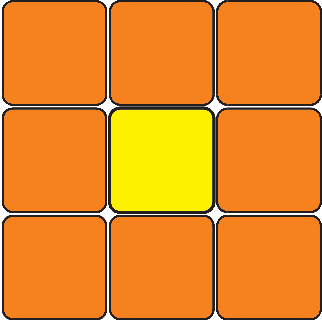
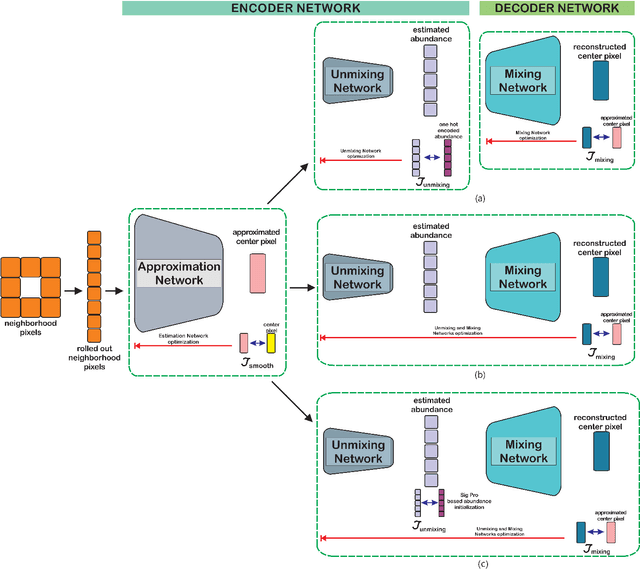
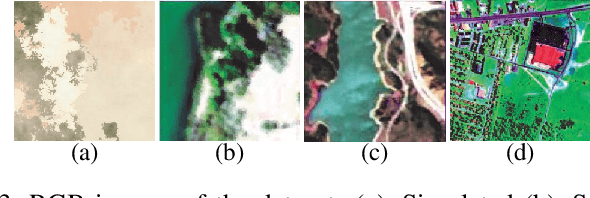
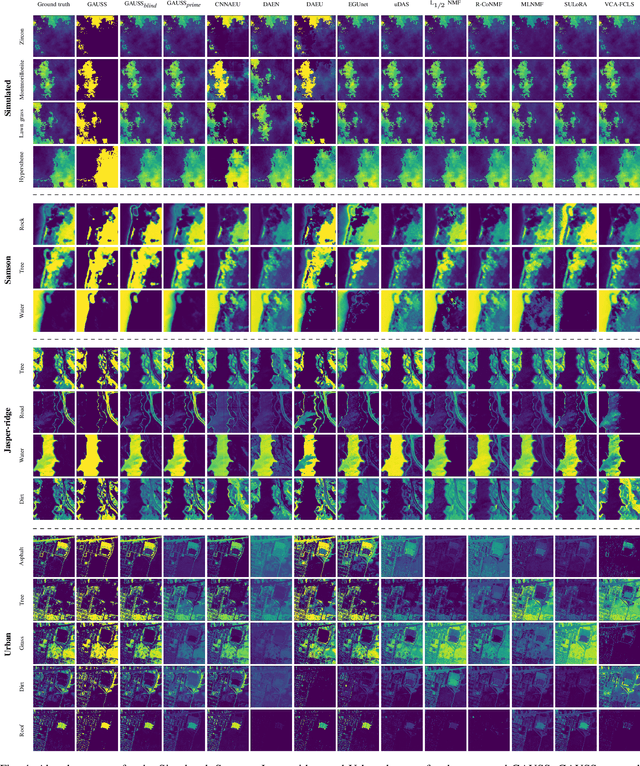
Abstract:In recent hyperspectral unmixing (HU) literature, the application of deep learning (DL) has become more prominent, especially with the autoencoder (AE) architecture. We propose a split architecture and use a pseudo-ground truth for abundances to guide the `unmixing network' (UN) optimization. Preceding the UN, an `approximation network' (AN) is proposed, which will improve the association between the centre pixel and its neighbourhood. Hence, it will accentuate spatial correlation in the abundances as its output is the input to the UN and the reference for the `mixing network' (MN). In the Guided Encoder-Decoder Architecture for Hyperspectral Unmixing with Spatial Smoothness (GAUSS), we proposed using one-hot encoded abundances as the pseudo-ground truth to guide the UN; computed using the k-means algorithm to exclude the use of prior HU methods. Furthermore, we release the single-layer constraint on MN by introducing the UN generated abundances in contrast to the standard AE for HU. Secondly, we experimented with two modifications on the pre-trained network using the GAUSS method. In GAUSS$_\textit{blind}$, we have concatenated the UN and the MN to back-propagate the reconstruction error gradients to the encoder. Then, in the GAUSS$_\textit{prime}$, abundance results of a signal processing (SP) method with reliable abundance results were used as the pseudo-ground truth with the GAUSS architecture. According to quantitative and graphical results for four experimental datasets, the three architectures either transcended or equated the performance of existing HU algorithms from both DL and SP domains.
Holistic Interpretation of Public Scenes Using Computer Vision and Temporal Graphs to Identify Social Distancing Violations
Dec 13, 2021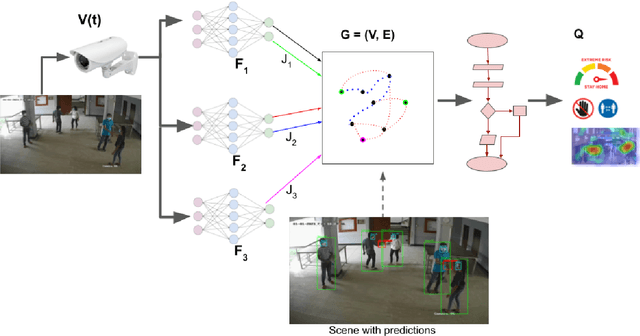
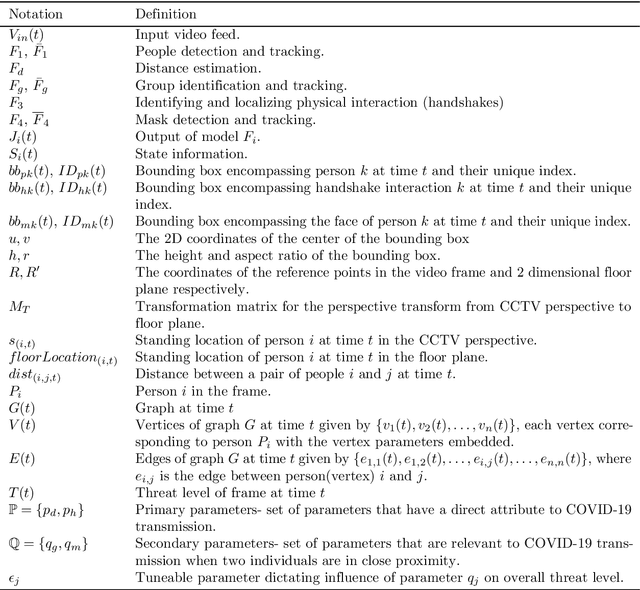
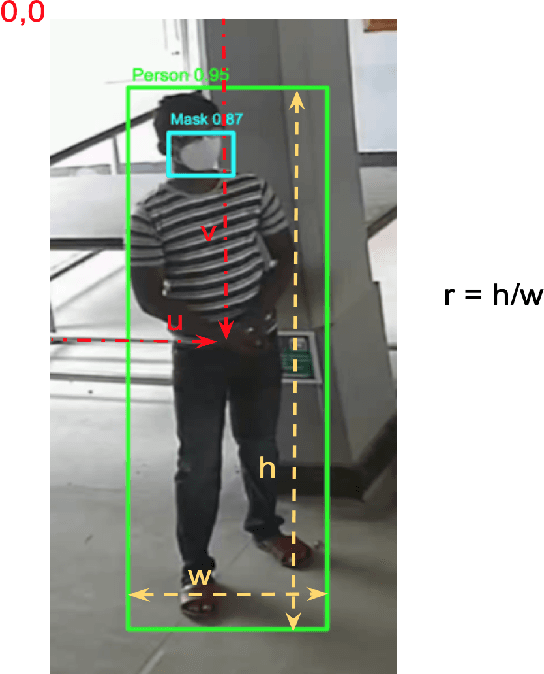

Abstract:The COVID-19 pandemic has caused an unprecedented global public health crisis. Given its inherent nature, social distancing measures are proposed as the primary strategies to curb the spread of this pandemic. Therefore, identifying situations where these protocols are violated, has implications for curtailing the spread of the disease and promoting a sustainable lifestyle. This paper proposes a novel computer vision-based system to analyze CCTV footage to provide a threat level assessment of COVID-19 spread. The system strives to holistically capture and interpret the information content of CCTV footage spanning multiple frames to recognize instances of various violations of social distancing protocols, across time and space, as well as identification of group behaviors. This functionality is achieved primarily by utilizing a temporal graph-based structure to represent the information of the CCTV footage and a strategy to holistically interpret the graph and quantify the threat level of the given scene. The individual components are tested and validated on a range of scenarios and the complete system is tested against human expert opinion. The results reflect the dependence of the threat level on people, their physical proximity, interactions, protective clothing, and group dynamics. The system performance has an accuracy of 76%, thus enabling a deployable threat monitoring system in cities, to permit normalcy and sustainability in the society.
Hands Off: A Handshake Interaction Detection and Localization Model for COVID-19 Threat Control
Oct 18, 2021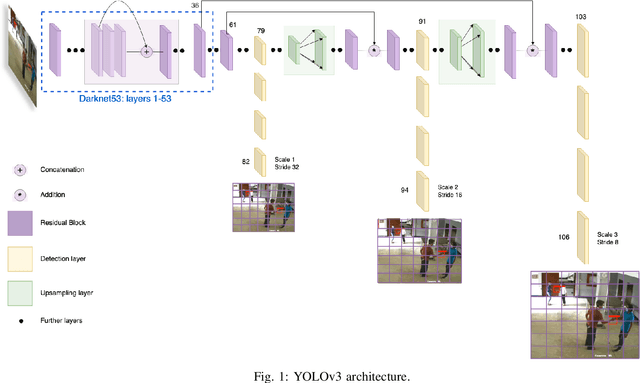

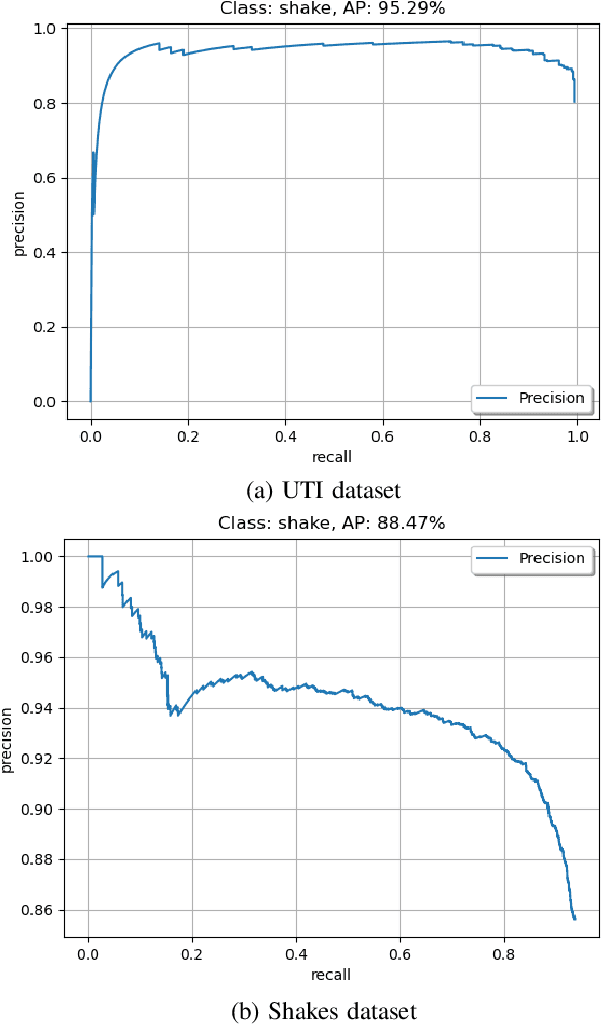
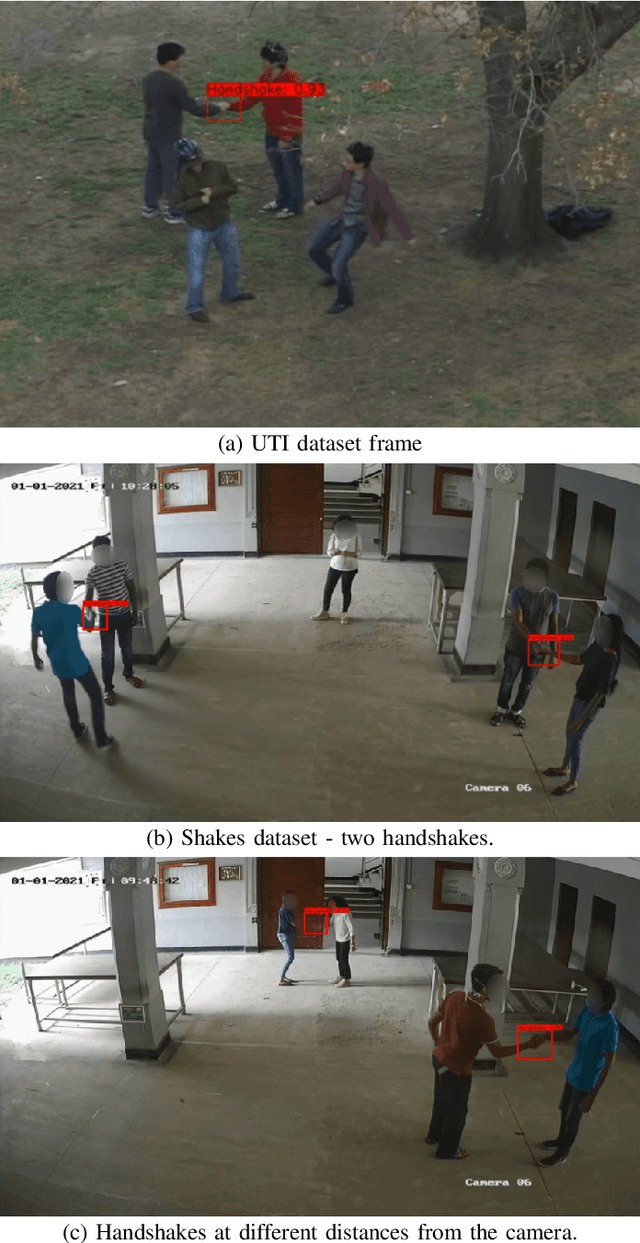
Abstract:The COVID-19 outbreak has affected millions of people across the globe and is continuing to spread at a drastic scale. Out of the numerous steps taken to control the spread of the virus, social distancing has been a crucial and effective practice. However, recent reports of social distancing violations suggest the need for non-intrusive detection techniques to ensure safety in public spaces. In this paper, a real-time detection model is proposed to identify handshake interactions in a range of realistic scenarios with multiple people in the scene and also detect multiple interactions in a single frame. This is the first work that performs dyadic interaction localization in a multi-person setting. The efficacy of the proposed model was evaluated across two different datasets on more than 3200 frames, thus enabling a robust localization model in different environments. The proposed model is the first dyadic interaction localizer in a multi-person setting, which enables it to be used in public spaces to identify handshake interactions and thereby identify and mitigate COVID-19 transmission.
A generalized forecasting solution to enable future insights of COVID-19 at sub-national level resolutions
Aug 21, 2021

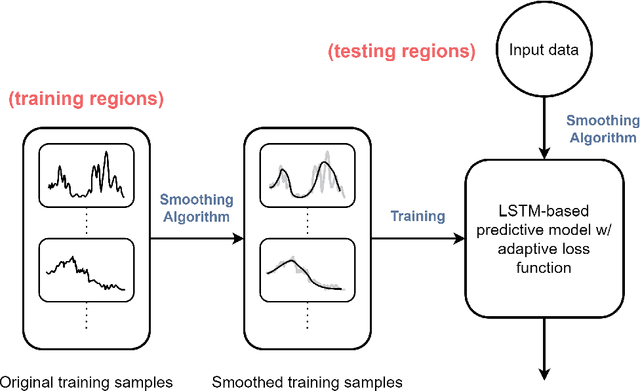

Abstract:COVID-19 continues to cause a significant impact on public health. To minimize this impact, policy makers undertake containment measures that however, when carried out disproportionately to the actual threat, as a result if errorneous threat assessment, cause undesirable long-term socio-economic complications. In addition, macro-level or national level decision making fails to consider the localized sensitivities in small regions. Hence, the need arises for region-wise threat assessments that provide insights on the behaviour of COVID-19 through time, enabled through accurate forecasts. In this study, a forecasting solution is proposed, to predict daily new cases of COVID-19 in regions small enough where containment measures could be locally implemented, by targeting three main shortcomings that exist in literature; the unreliability of existing data caused by inconsistent testing patterns in smaller regions, weak deploy-ability of forecasting models towards predicting cases in previously unseen regions, and model training biases caused by the imbalanced nature of data in COVID-19 epi-curves. Hence, the contributions of this study are three-fold; an optimized smoothing technique to smoothen less deterministic epi-curves based on epidemiological dynamics of that region, a Long-Short-Term-Memory (LSTM) based forecasting model trained using data from select regions to create a representative and diverse training set that maximizes deploy-ability in regions with lack of historical data, and an adaptive loss function whilst training to mitigate the data imbalances seen in epi-curves. The proposed smoothing technique, the generalized training strategy and the adaptive loss function largely increased the overall accuracy of the forecast, which enables efficient containment measures at a more localized micro-level.
An Optical physics inspired CNN approach for intrinsic image decomposition
May 21, 2021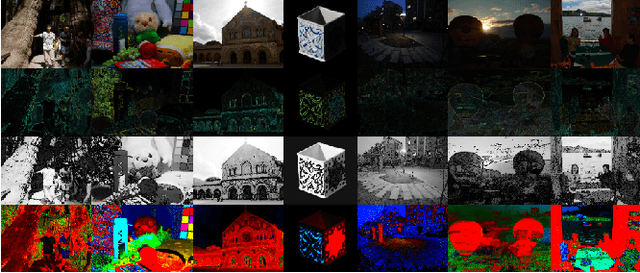

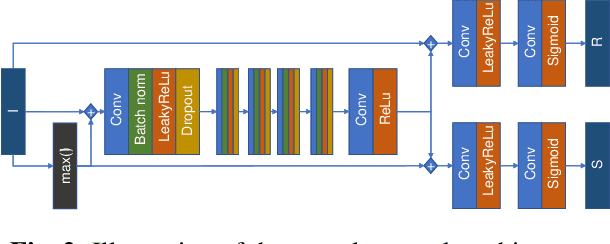
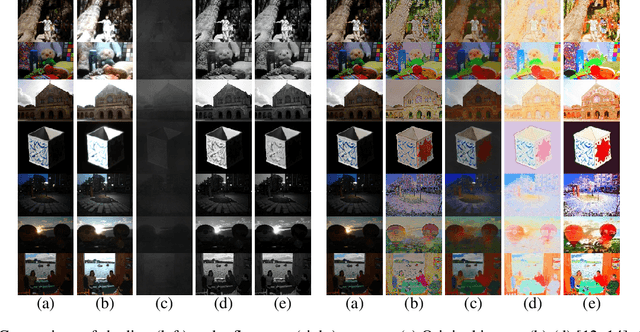
Abstract:Intrinsic Image Decomposition is an open problem of generating the constituents of an image. Generating reflectance and shading from a single image is a challenging task specifically when there is no ground truth. There is a lack of unsupervised learning approaches for decomposing an image into reflectance and shading using a single image. We propose a neural network architecture capable of this decomposition using physics-based parameters derived from the image. Through experimental results, we show that (a) the proposed methodology outperforms the existing deep learning-based IID techniques and (b) the derived parameters improve the efficacy significantly. We conclude with a closer analysis of the results (numerical and example images) showing several avenues for improvement.
Convolutional Autoencoder for Blind Hyperspectral Image Unmixing
Nov 18, 2020



Abstract:In the remote sensing context spectral unmixing is a technique to decompose a mixed pixel into two fundamental representatives: endmembers and abundances. In this paper, a novel architecture is proposed to perform blind unmixing on hyperspectral images. The proposed architecture consists of convolutional layers followed by an autoencoder. The encoder transforms the feature space produced through convolutional layers to a latent space representation. Then, from these latent characteristics the decoder reconstructs the roll-out image of the monochrome image which is at the input of the architecture; and each single-band image is fed sequentially. Experimental results on real hyperspectral data concludes that the proposed algorithm outperforms existing unmixing methods at abundance estimation and generates competitive results for endmember extraction with RMSE and SAD as the metrics, respectively.
 Add to Chrome
Add to Chrome Add to Firefox
Add to Firefox Add to Edge
Add to Edge